Having a solid preflop strategy is vital to becoming a profitable poker player. Whether you are a cash game or tournament player, your preflop ranges are the foundation in which your entire strategy is built upon. Far too many small stakes players use the wrong preflop charts, and when they do use the correct ones, fail to deviate from them in necessary situations. Learning when to three-bet, call, or fold before the flop will make a dramatic difference in your win-rate. Read this article closely so you can master preflop poker.
- Playing Passively Preflop
- Playing Cash Games and Tournaments As If They Are The Same Game
- Stacking Off Too Lightly Preflop When Deep Stacked
This video comes from Jonathan Little’s YouTube Channel. If you would like to stay up to date with more video content such as this, including hand breakdowns from Hellmuth vs Dwan, Garrett Adelstein, Brad Owen and more, check out the channel!
Top 3 Preflop Mistakes
Preflop play is the most important aspect of poker. Failing to execute a strong preflop strategy results in a poor poker players not being able to play postflop well. Utilizing flawed ranges preflop leads to too many nut hands being in your range, eventually tipping off opponents when to get out of your way. Weak preflop ranges can also result in too many bluffs being in your range, which will encourage opponents to stick around knowing they likely have you beat.
Recognizing the three biggest preflop mistakes commonly made by poker players will allow you to highlight flaws in your own game and help you correct them.
Playing Too Passively Preflop [How To Increase Your Aggression]
Playing passively causes you to bleed chips constantly while waiting to cooler someone, this is not how you crush the games you play!
One time I got a call from a friend who plays poker recreationally. He explained to me how he is always able to survive late in tournaments by playing tight and being willing to fold lots of hands. While the friend in question would survive, the blinds would slowly eat away his stack, and if he did eventually double up he was right back at his starting stack. While I appreciate my friend’s love for poker, he was not using a strategy that would result in profit.
Winning in poker tournaments is the result of taking down small pots over the course of the tournament. Raking in small pots sustains your stack and leaves you with enough chips behind to massively improve when you win your flips, while also having a playable stack remaining when you happen to lose.
In my own game, I utilize three rules that assist me in playing aggressively.
Always Raising First When Opening The Action
While there are a few specific cases where you can rationalize limping into a hand preflop, the vast majority of the time you should be raising when opening the action. If your opponents fold to your preflop and you have a playable hand, always be raising!
Examples Of Raise-First-In Ranges
When you enter the pot, you usually want to be raising as it provides you with preflop fold equity when opponents fold their hands. Additionally, playing postflop as the aggressor allows you to utilize continuation bets that can turn into strategic bluffs on the turn and river.
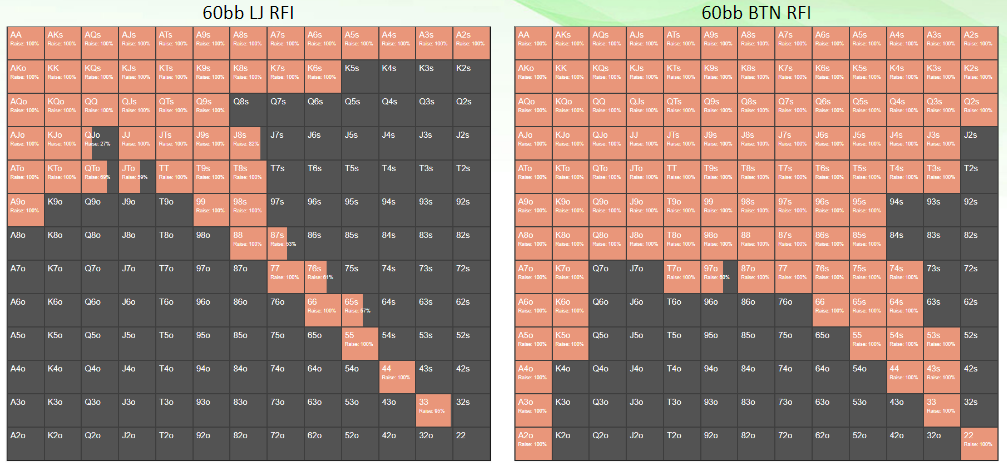
In both the lojack and button charts, the red represents when you should be raising, and the grey represents when you should be folding. Notice some hands require you to mix both raising and folding in various ratios. While you can mix these hands, I recommend purely raising with them as these charts assume you are facing opponents who play perfect poker. Especially if you are a low stakes player, you know the majority of opponents you face will play far from perfect poker. Often small stakes opponents will play too weak and too passively, allowing you to exploitatively three-bet a bit wider than the above charts recommend.
When studying charts, it is important to associate the right charts with the right scenario. Examing the above lojack and button charts will do you no help if you are trying to study early position RFI ranges with a 40 big blind stack. An important thing to remember!
Three-Bet Constantly While Having Bluffs In Your Range
While you should not, in a literal sense, constantly three-bet every hand you play, you should be three-betting more than you likely already do. Make sure you have bluffs in your range to remain unexploitable to capable opponents who will recognize an overly tight range.
Raising with a balanced range containing bluffs allows you to remain unpredictable, and gives you opportunities to get paid off when you have the nuts! Novice poker players make the mistake of only three-betting when you have the nuts, but by doing that opponents will eventually recognize your strength and get out of the way. If an opponent hasn’t played a hand in six hours but all of a sudden is three-betting over your raise, you can likely put them on queens, kings, or aces.
To make sure you are not easy to play against, you need to three-bet with more than just the nuts.
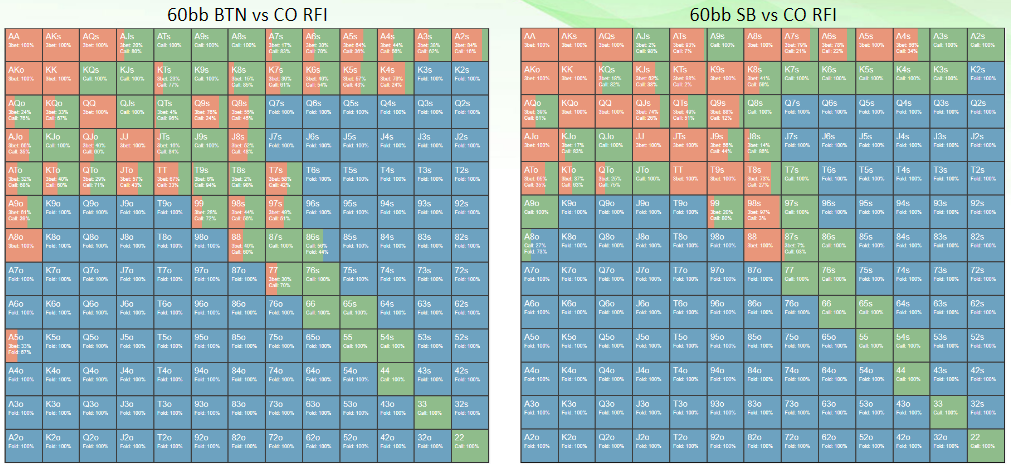
The displayed charts represent how a button player should respond to an opening raise from the cutoff with 60 big blinds, and what a small blind player should do facing an opening raise from the cutoff with the same stack size. Each chart displays the three options at a player’s disposal, fold being in blue, call being in green, and raise being in red.
From the button facing a cutoff raise, you will predictably raise with your premium hands such as A-A, K-K, A-K, and A-Q, but you will also mix in three-bets with hands like A-8 offsuit and 10-7 suited. Some hands that are three-bet as bluffs are effective as they often block your opponent from having premium hands. If you have an ace in your hand, that is one less ace your opponent is capable of having.
While you are calling with some hands, you are still three-betting with junky hands as well that flop well. If you three-bet with a junky hand and your opponent four-bets you, just fold! Many recreational players make the mistake of three-betting hands like A-10 and A-J and calling four-bets from opponents, provide yourself with easy decisions by folding hands not strong enough to call four-bets while calling with hands that can.
Considering Table Position
The 60BB SB vs CO RFI chart represents a spot where the three-better will be playing postflop out of position. Notice this chart represents a far more linear range than it’s counterpart, this is due to the small blind having to play out of position. If an opponent is knowledgeable and recognizes the advantages of playing postflop in-position, they are much more likely to call, encouraging you to play hands you don’t mind playing postflop.
Three-betting the same premium hands represented in the other chart, you will still have some bluffs in your range although they are slightly better due to the lack of position. It may be confusing seeing junky hands within the small blind’s calling range, but if opponents are competent you can call from the small blind somewhat wide.
Call decently wide from the small blind, but be sure to aggressively three-bet with some “junkier” hands with an understanding you can fold when four-bet.
Shove All-In Over Raises More Often With Shorter Stacks
As your stack gets shorter and shorter, you should be more aggressive moving all-in over raises. You do not want to be doing a lot of calling when shorter stacked as it is in your best interest to raise. By being aggressive and utilizing well executed shoves, you in turn receive maximum fold equity which slowly chips you up. Playing overly tight and waiting for the pinnacle of premium hands to shove with results in you slowly blinding out. Get over the fear of busting as doubling up with aces doesn’t matter if you only have two big blinds.
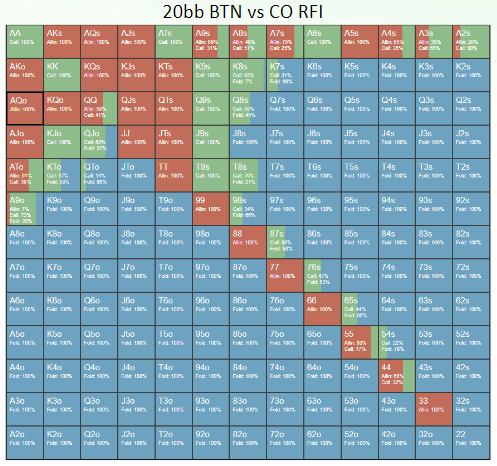
A common mistakes made by players is that they only utilize shove/fold charts when their stack dwindles to 20 big blinds. Referencing the above chart, you’ll see it is in your best interest to have some calling hands when opponents raise from late position. Most of your calling hands (in green) are offsuit high card hands as well as hands that flop reasonably well. Using a shove/fold chart takes away the bottom of your range and keeps you from capitalizing on favorable flops. By establishing a calling range with a short stack, you must be sure to call with premium pairs as well to balance your range.
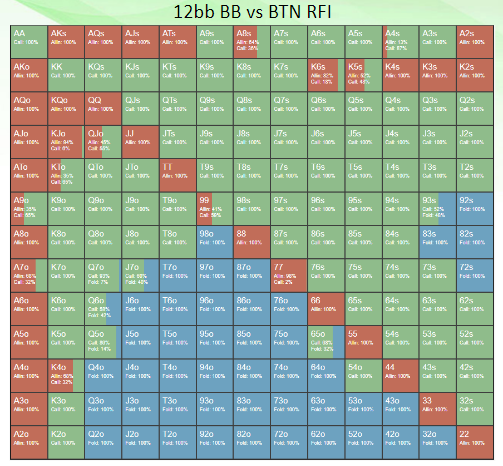
With an even shorter stack, you should still be calling with a wide variety of hands due to the pot hands you are being offered, as well as being able to close the action. Your shoving range (in red) will contain a lot of ace-x offsuit, pairs, king-x suited, and some premium hands as well. It may by surprising to see hands like aces and kings calling, but by balancing your range, calling with these hands allows you to call with junkier holdings. Additionally, calling lets you see the flop and realize your equity before proceeding postflop.
Playing good, sound, strategic poker requires getting past the outlook of “I only have 12 big blinds so I should only shove or fold”. The game is no-limit Texas Hold’em, not All-In or Fold Texas Hold’em. Recognize the options you have at your disposal and avoid the error of following just one chart blindly.

Crush cash games and poker tournaments with Jonathan Little’s Top Ten Poker Tips!
The Differences Between Cash Games And Tournaments
A lot of people wake up in the morning, say to themselves “I’m going to play no-limit Texas Hold’em today”, and put little stock into what variation they are going to take part it. Despite technically being the same game, the proper fundamentals for cash games and tournaments are extremely different.
The Structure Of Cash Games And Tournaments
The main difference between NLH cash games and tournaments is in their structure. A NLH tournament will have antes incentivizing players to play and increase the speed of the tournament, while cash games utilize a rake to ensure a small percentage of each pot goes to the casino. While rake structures may differ between some casino and poker rooms, the vast majority of the time there will be some form of hand rake.
An ante in a tournament naturally adds more equity to the pot, naturally improving your pot odds in each hand. Since a rake takes money out of the pot it has the opposite effect, worsening your pot odds. The lack of pot odds caused by rake means you should play less hands when sitting at a cash game table. In most cash games, if you win the pot before the flop you avoid having to pay the rake. If you prefer making money as opposed to losing money, naturally you can see the benefit in exploitatively three-betting preflop.
How Antes And Rake Effect Your Preflop Strategy
In tournaments, you should defend your big blind much wider than in cash games.
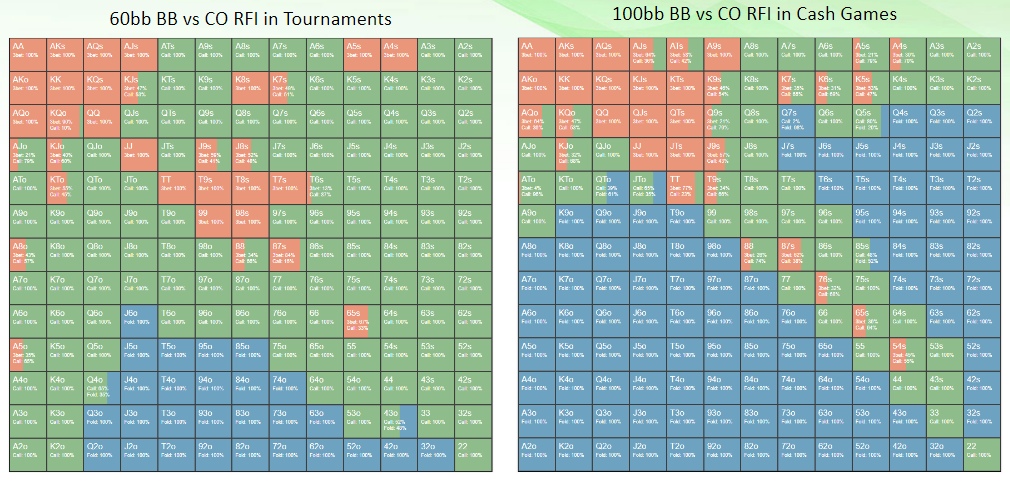
Examining the above charts, you can see the big blind in a tournament calls much wider (in green) than the big blind in a cash game. Many tournament players make the mistake of folding (in blue) junky combo hands despite the odds they are getting to see the flop. Additionally, you should be three-betting (in red) much wider, not just with your best hands but with more bluffs as well.
In many cash games, players are very loose and very splashy. Even when you raise large for five big blinds, it is not out of the question for you to draw five callers in a cash game. If the cutoff raises-first-in and it folds to your in the big blind, you’re supposed to three-bet with a good, strong linear range and call tightly. Many novice cash game players will call from the big blind with A-8 offsuit, 9-8 offsuit, 10-9 offsuit, J-7 suited citing pot odds, but such a wide calling range will result in wasted chips due to the rake.
Strategically Cold Calling
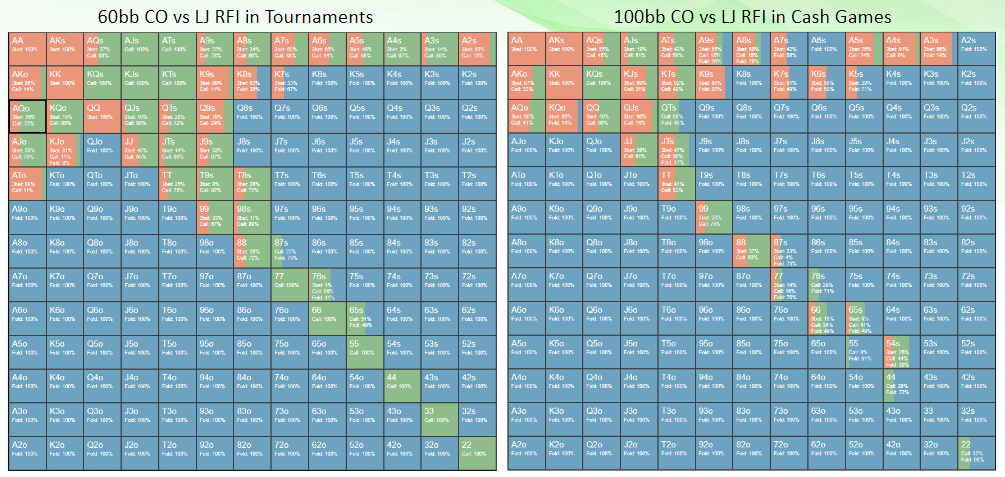
In tournaments, you cold call in-position more often than in cash games. Referencing the above charts, you will notice a cutoff player facing a lojack raise in a tournament calls much wider than a cash game player in the same position (calling hands in green). Hands the tournament player will be cold calling with should be three-bet (in red) in a cash game.
Accounting for the structure of the game you are playing allows you to make the proper adjustments necessary to turn a profit. In general, take advantage of the lack of rake and presence of antes in tournaments by playing loose and aggressive. In cash games, respect the rake by maintaining an aggressive, tighter strategy.
Adjusting Too Deep Stacks And When To Go All-In
A sound GTO strategy often calls instead of re-raises with non-nut hands like J-J or A-K when facing tight preflop ranges. Additionally, most players, especially at the lower stakes, are not bluffing at the proper frequencies. Their inability to bluff correctly allows you to properly adjust and make big folds to avoid coolers some players would deem “unavoidable”.
GTO Preflop Strategies When Facing Tight Ranges
100 Big Blinds Lojack Vs Big Blind Three-Bet In A Cash Game
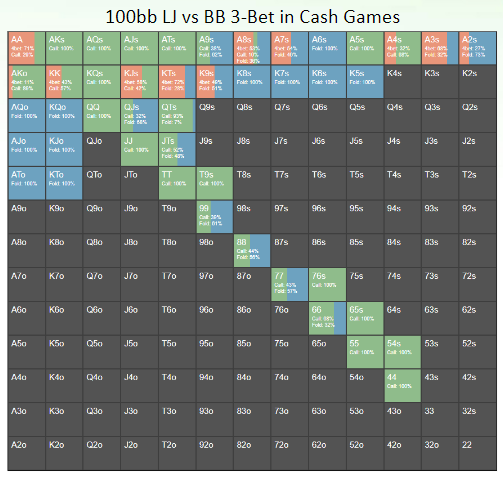
Considering a cash game scenario where you raise from the lojack (100 big blinds effective) and the big blind three-bets, the big blind’s range should be pretty strong. With an opponent demonstrating what should be a strong range, you in turn should four-bet aces and kings sometimes, and also a variety of good blocker bluff combos (A-9 suited, A-3 suited, K-T suited).
It may be confusing seeing strong pairs like queens and jacks calling and hands like A-Q offsuit and Q-J suited folding, but if your opponent is playing well and has a strong range, these are the plays you must be willing to make.
Remember: players at the lower stakes often don’t four-bet bluff enough, so when they do consider the strength they likely have.
100 Big Blinds Button Vs Small Blind Three-Bet In A Cash Game
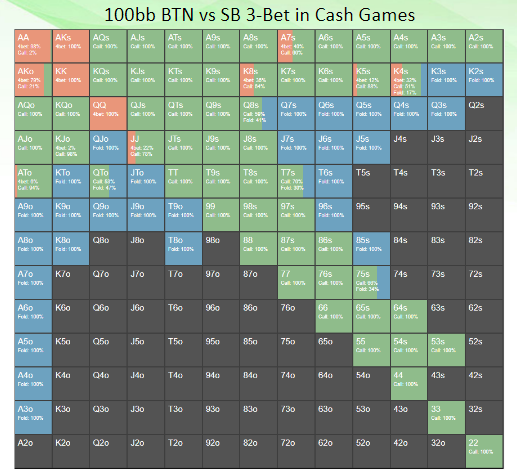
Let’s consider another three-bet scenario, but this time you are the button facing a three-bet from the small blind. Since you are playing this hand from later position, naturally you are playing with a wider range. Playing with a wider range, you have the ability to call wider as well. A GTO player in a cash game will often three-bet wide from the small blind, something important to remember when you face a similar spot!
While you will call wider facing a small blind three-bet, you are still folding the majority of hands that struggle to flop well (in blue above). Additionally, you are mostly four-betting your best premium hands (in red), those hands being Q-Q+ and occasionally junky A-x, K-x suited hands.
Many poker players assume you should always get it in preflop with your pocket tens and pocket jacks, but such a strategy will only torch your money. Be patient, make the call, and see the flop. Especially when you are in-position facing an out of position three-bet, you should be doing a lot of calling. When you call with hands like pocket tens or A-Q, you avoid “coolers” when your opponent has pocket aces/kings, and you strengthen your calling range.
Facing A Big Blind Four-Bet With Pocket Jacks
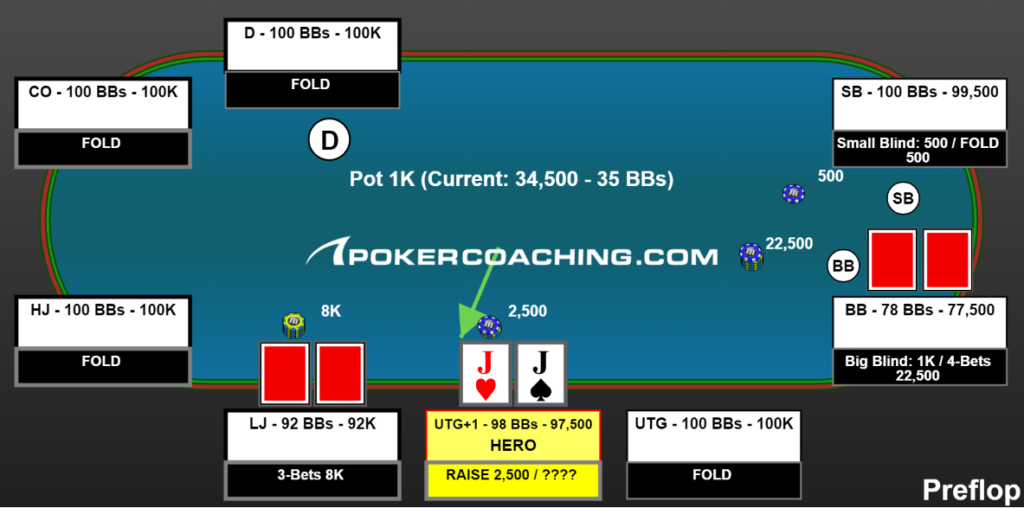
You are 100 big blinds deep in a tournament when you raise UTG+1 holding J♥-J♠. Following a three-bet from the lojack, it folds around to the big blind who four-bets. At this point, this is a very easy fold with your pocket jacks.
While it may be hard, consider all the information you have: you raised from early position, the lojack immediately three-bet, and despite having worse position the big blind is still willing to four-bet. If you were holding queens you could consider proceeding, but with jacks alarm bells should be going off in your head! You may be flipping against the big blind when they are holding A-K, but with the lojack yet to act, you may even consider folding pocket queens and A-K offsuit as one of the two players likely has you beat.
Giving up on these hands may seem nitty, but if you are early in a tournament it is okay to get out of the way as there is still plenty of poker to be played.
Conclusion
The fastest way to improve as a poker player is recognizing the mistakes and leaks in your game and putting in the work to correct them. If you put in the time and effort to avoid playing too passively, recognize the differences in cash game and tournament play, and stop stacking off too lightly when deep, you will see a massive change in your win-rate. Profit in poker comes to those willing to recognize their weaknesses and grow from shortcomings, take the lessons from this article and you too can gradually move up stakes.
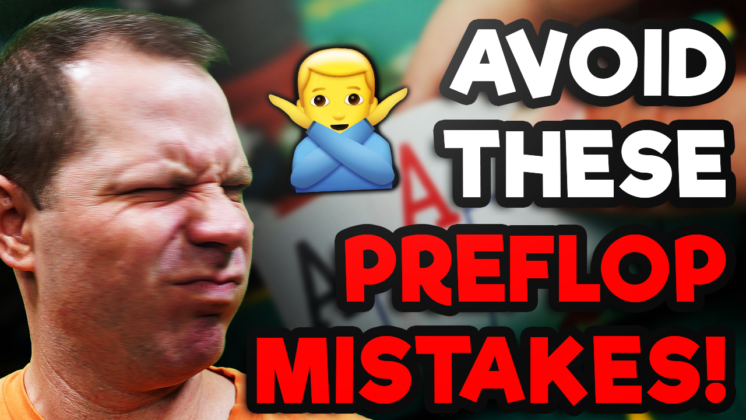
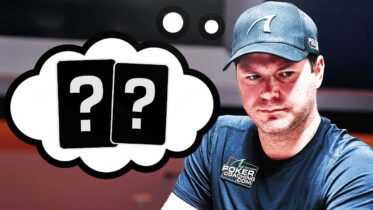
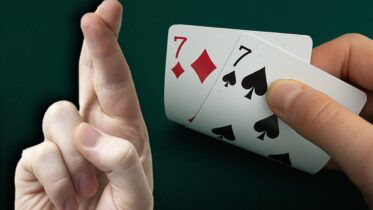

Pingback: pork tenderloin
Pingback: sex loan luan
Pingback: Exosome
Pingback: หาฤกษ์ศัลยกรรม